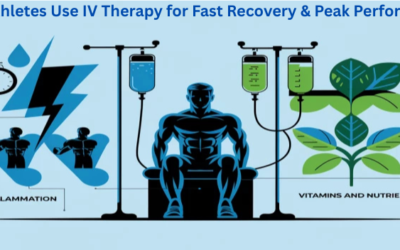Platelet-Rich Plasma (PRP) therapy has gained popularity for its regenerative properties and effectiveness in treating hair loss, skin rejuvenation, and joint issues. However, like any medical procedure, PRP comes with its own set of potential side effects. While most are mild and temporary, managing them well is key to a smooth and successful recovery.
In this blog, we’ll explore expert advice on managing PRP side effects and what to expect post-procedure.
Common Side Effects of PRP Therapy
While PRP is generally safe (since it uses your own blood), minor side effects may occur. These typically include:
- Swelling
- Redness
- Mild pain or tenderness
- Bruising at the injection site
- Headache (especially after scalp PRP)
- Temporary itching or dryness
Expert Tips to Manage PRP Side Effects
1. Follow Post-Treatment Instructions Carefully
Your doctor will provide aftercare guidelines. Stick to these strictly, including avoiding touching the treated area, applying ice if advised, and not washing the area for a certain period.
2. Use Cold Compresses
To reduce swelling and discomfort, apply a cold compress (not ice directly) to the area for 10-15 minutes, a few times a day.
3. Avoid Anti-Inflammatory Medications
Avoid taking NSAIDs (like ibuprofen or aspirin) for at least a few days post-treatment. These drugs can interfere with the healing process PRP is trying to promote.
4. Keep Hydrated and Maintain a Healthy Diet
Drinking plenty of water and eating anti-inflammatory foods (like berries, leafy greens, and fatty fish) can support recovery.
5. Rest, But Stay Active
Light activity is fine, but avoid intense exercise for at least 24-48 hours to prevent exacerbating swelling or discomfort.
6. Avoid Harsh Hair and Skin Products
If you’ve had PRP on your scalp or face, avoid products with strong chemicals, alcohol, or fragrances for 48-72 hours.
7. Don’t Panic Over Minor Bruising or Discomfort
These are normal and should subside within a few days. If symptoms persist or worsen, contact your provider.
When to Seek Medical Advice
While complications are rare, contact your healthcare provider if you experience:
- Severe pain or swelling
- Signs of infection (pus, warmth, fever)
- Allergic reactions (rash, hives, difficulty breathing)
- Dizziness or fainting
FAQs on PRP Side Effects and Recovery
Q1: How long do PRP side effects last?
Most mild side effects (like swelling and redness) resolve within 2-3 days. Bruising may last up to a week.
Q2: Is it normal to feel pain after PRP injections?
Yes, mild tenderness or discomfort is common and typically fades within 48 hours.
Q3: Can I wash my hair or face after PRP?
Wait at least 24 hours before washing the treated area, unless your doctor advises otherwise.
Q4: When can I resume workouts?
Light walking is okay, but avoid strenuous workouts for 1-2 days post-treatment.
Q5: Can I use makeup after facial PRP?
Avoid applying makeup for at least 24-48 hours to prevent irritation and infection.
Q6: Will PRP cause hair shedding?
A temporary shedding phase may occur, which is part of the natural hair cycle and usually subsides.
Q7: How can I tell if I’m allergic to PRP?
Because PRP is made from your own blood, allergic reactions are extremely rare. However, reactions can occur due to additives or improper injection technique.
Final Thoughts
PRP therapy is a promising, minimally invasive treatment with a high safety profile. Understanding and managing the minor side effects helps ensure a comfortable recovery and optimal results. Always consult with a qualified provider and follow aftercare advice to support healing.




0 Comments